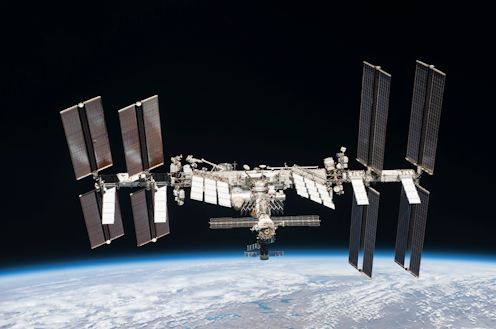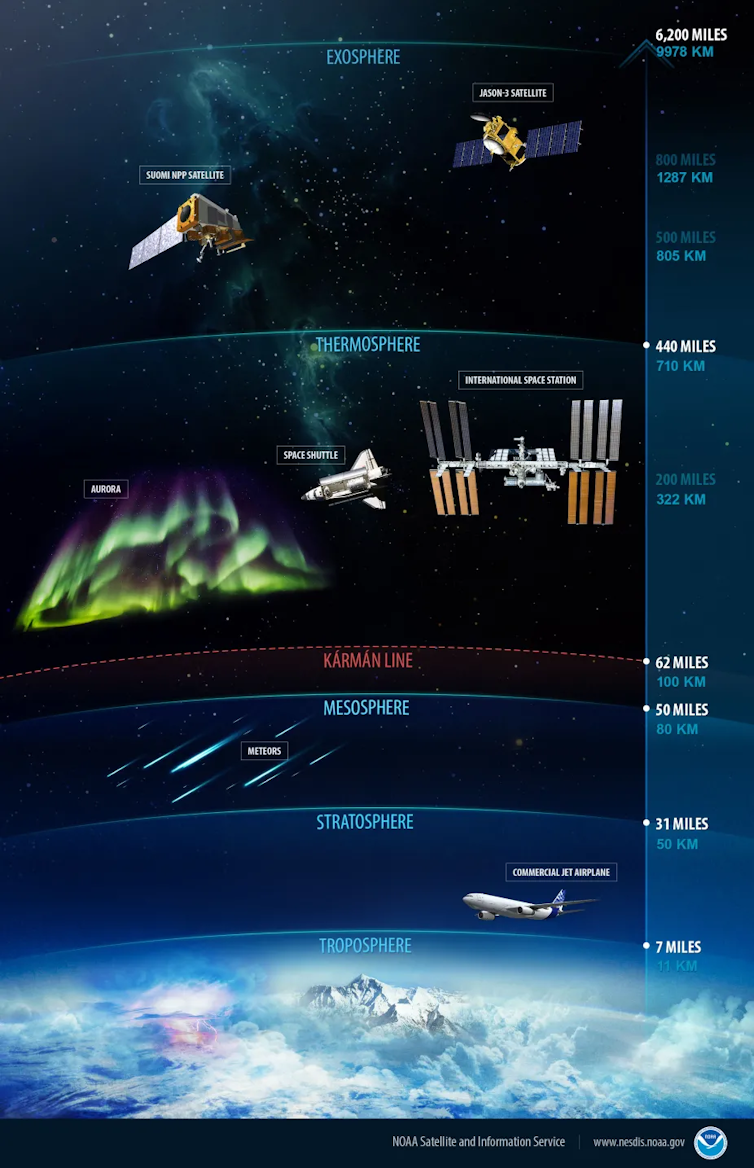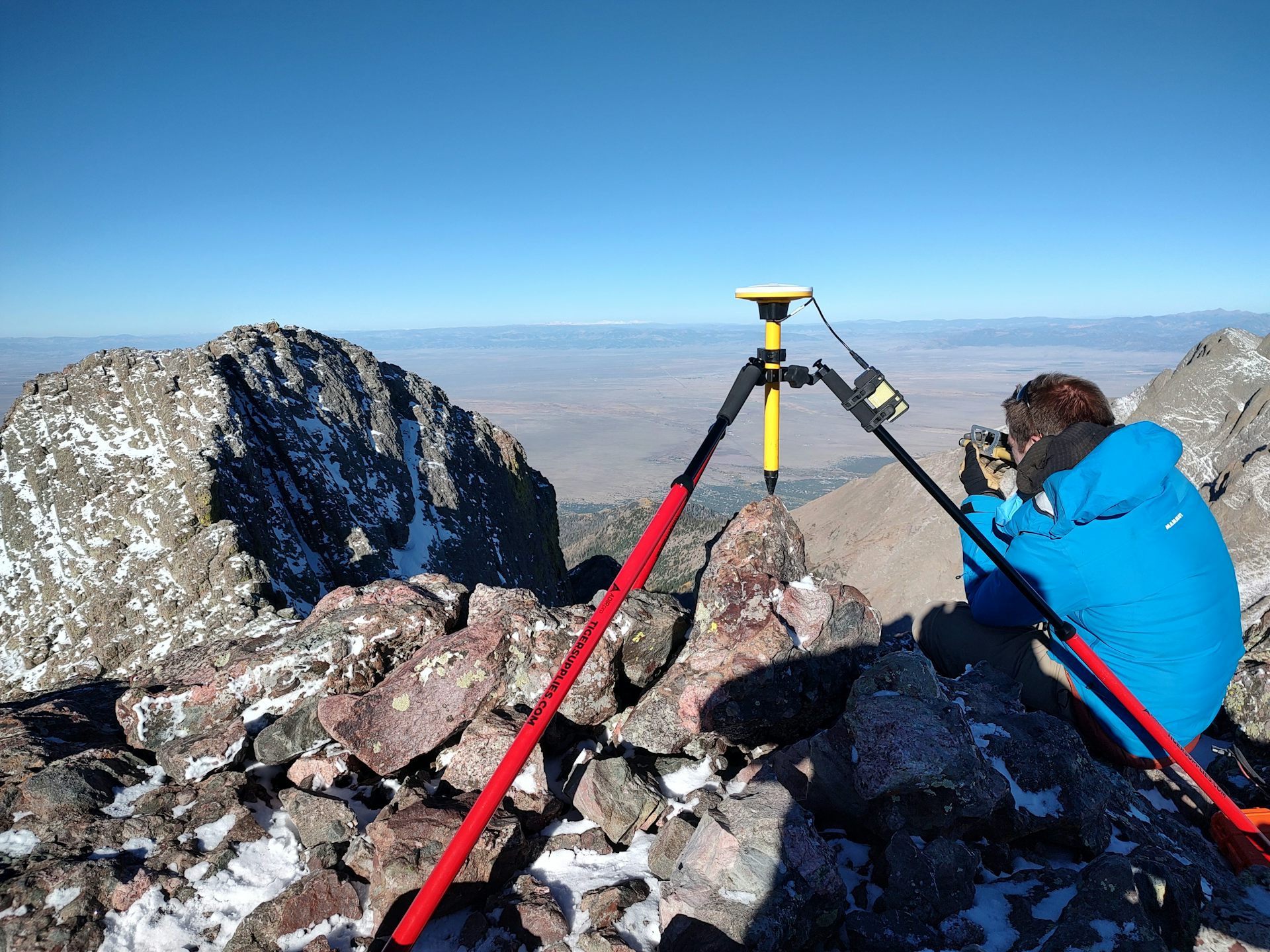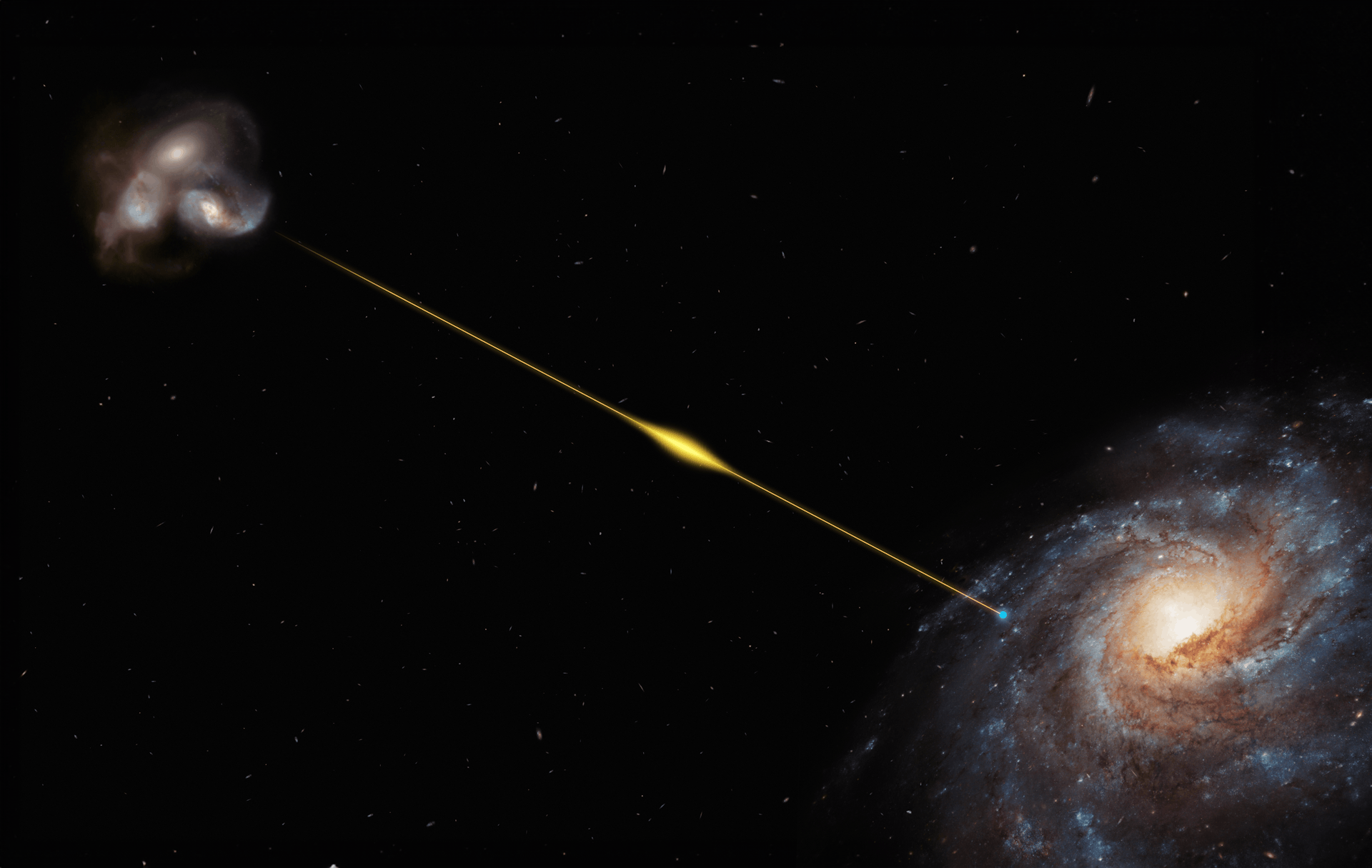How does the International Space Station orbit Earth without burning up?
The International Space Station is an engineering feat that has led to countless scientific discoveries. Like the thousands of satellites in orbit, it manages to stay up in the atmosphere.


Curious Kids is a series for children of all ages. If you have a question you’d like an expert to answer, send it to CuriousKidsUS@theconversation.com.
How is the International Space Station able to orbit without burning up? – Mateo, age 8, New York, New York
Flying through Earth’s orbit are thousands of satellites and two operational space stations, including the International Space Station, which weighs as much as 77 elephants. The International Space Station, or ISS, hosts scientists and researchers from around the world as they contribute to discoveries in medicine, microbiology, Earth and space science, and more.
One of my first jobs in aerospace engineering was working on the ISS, and the ISS remains one of my favorite aerospace systems. I now work at Georgia Tech, where I teach aerospace engineering.
The ISS travels very quickly around the Earth at 5 miles per second (8 kilometers per second), which means it could fly from Atlanta to London in 14 minutes. But at the same time, small chunks of rock called meteoroids shoot through space and burn up when they hit Earth’s atmosphere. How is it that some objects – such as the International Space Station – orbit the Earth unscathed, while others, such as asteroids, burn up?
To answer why the ISS can stay in orbit for decades unscathed, you first need to understand why some things, such as meteoroids, do burn up when they enter our planet’s atmosphere.
Why do meteoroids burn up in the atmosphere?
Meteoroids are small chunks of rock and metal that orbit the Sun. These space rocks can travel between 7 and 25 miles per second (12 to 40 km per second). That’s fast enough to cross the entire United States in about 5 minutes.
Sometimes, the orbit of a meteoroid overlaps with Earth, and the meteoroid enters Earth’s atmosphere – where it burns up and disintegrates.
Even though you can’t see them, the atmosphere is full of a combination of particles, primarily nitrogen and oxygen, which make up the air you breathe. The farther you are from the surface of the Earth, the lower the density of particles in the atmosphere.
The atmosphere has several layers. When something from space enters the Earth’s atmosphere, it must pass through each of these layers before it reaches the ground.
Meteoroids burn up in a part of Earth’s atmosphere called the mesosphere, which is 30 to 50 miles (48 to 80 kilometers) above the ground. Even though the air is thin up there, meteoroids still bump into air particles as they fly through.
When meteoroids zoom through the atmosphere at these very high speeds, they are destroyed by a process that causes them to heat up and break apart. The meteoroid pushes the air particles together, kind of like how a bulldozer pushes dirt. This process creates a lot of pressure and heat. The air particles hit the meteoroid at hypersonic speeds – much faster than the speed of sound – causing atoms to break away and form cracks in the meteroid.
The high pressure and hot air get into the cracks, making the meteoroid break apart and burn up as it falls through the sky. This process is called meteoroid ablation and is what you are actually seeing when you witness a “shooting star.”

Why doesn’t the ISS burn up?
So why doesn’t this happen to the International Space Station?
The ISS does not fly in the mesosphere. Instead, the ISS flies in a higher and much less dense layer of the atmosphere called the thermosphere, which extends from 50 miles (80 km) to 440 miles (708 km) above Earth.
The Kármán line, which is considered the boundary of space, is in the thermosphere, 62 miles (100 kilometers) above the surface of the Earth. The space station flies even higher, at about 250 miles (402 km) above the surface.
The thermosphere has too few particles to transmit heat. At the height of the space station, the atmosphere is so thin that to collect enough particles to equal the mass of just one apple, you would need a box the size of Lake Superior!
As a result, the ISS doesn’t experience the same kind of interactions with atmospheric particles, nor the high pressure and heat that meteoroids traveling closer to Earth do, so it doesn’t burn up.
A high-flying research hub
Although the ISS doesn’t burn up, it does experience large temperature swings. As it orbits Earth, it is alternately exposed to direct sunlight and darkness. Temperatures can reach 250 degrees Fahrenheit (121 degrees Celsius) when it’s exposed to the Sun, and then they can drop to as low as -250 degrees F (-156 degrees Celsius) when it’s in the dark – a swing of 500 degrees F (277 degrees C) as it moves through orbit.
The engineers who designed the station carefully selected materials that can handle these temperature swings. The inside of the space station is kept at comfortable temperatures for the astronauts, the same way people on Earth heat and cool our homes to stay comfortable indoors.
Research on the ISS has led to advancements such as improved water filtration technologies, a better understanding of Earth’s water and energy cycles, techniques to grow food in space, insights into black holes, a better understanding of how the human body changes during long-duration space travel, and new studies on a variety of diseases and treatments.
NASA plans to keep the ISS active until 2030, when all of the astronauts will return to Earth and the ISS will be deorbited, or brought down from orbit by a specially designed spacecraft.
As it comes down through Earth’s atmosphere in the deorbiting process, it will enter the mesosphere, where many parts of it will heat up and disintegrate.
Some spacecraft, such as the crew capsules that bring astronauts to and from the ISS, can survive reentry into the atmosphere using their heat shield. That’s a special layer made up of materials that are able to withstand very high temperatures. The ISS wasn’t designed for that, so it doesn’t have a heat shield.
If you’d like to see the space station as it passes over your area, you can check out NASA’s website to find out when it might be visible near you.
Hello, curious kids! Do you have a question you’d like an expert to answer? Ask an adult to send your question to CuriousKidsUS@theconversation.com. Please tell us your name, age and the city where you live.
And since curiosity has no age limit – adults, let us know what you’re wondering, too. We won’t be able to answer every question, but we will do our best.
Kelly Griendling does not work for, consult, own shares in or receive funding from any company or organization that would benefit from this article, and has disclosed no relevant affiliations beyond their academic appointment.
Read These Next
Meditating on the connectedness of life could help reunite a divided country – here’s how ‘interbein
Meditation can change our perceptions about things we encounter in our daily lives − revealing the…
Measuring Colorado’s mountains one hike at a time
To most accurately measure mountain peaks, Eric Gilbertson lugs equipment all the way to the top.
Most normal matter in the universe isn’t found in planets, stars or galaxies – an astronomer explain
Most of the universe is made up of dark matter and dark energy. The majority of everything else is dispersed…






